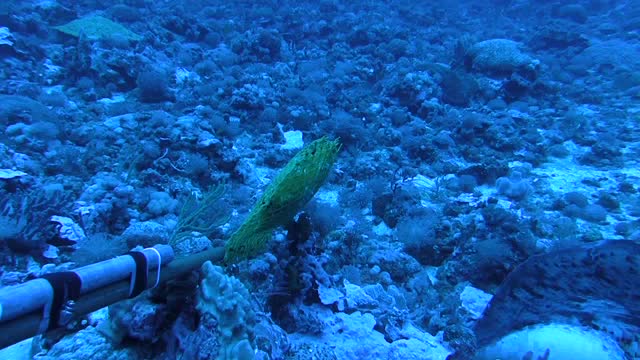Scientists document diverse marine life of PHL's Benham Rise
Scientists recently managed to photograph the diverse array of marine wildlife of Benham Rise in an expedition undertaken earlier this year.
“(Among us), no one has ever seen reefs like this. Benham is indeed a special place,” said Margot Stiles, Director of Science and Strategy at environmental nonprofit group Oceana Philippines.
Two years since the first expedition in 2014, a new team from the Bureau of Fisheries and Aquatic Resources (BFAR), the UP Marine Science Institute, the UP Los Baños School of Environmental Science and Management, and Oceana arrived in Benham Bank last May 23 for a week-long expedition.
“We saw terraces of corals, as far as the eye could see. It’s so exciting to know that we have such a vast and pristine coral reef ecosystem within Philippine territory,” marine scientist Marianne Pan-Saniano said in a press statement.
For some scientists, such reefs could serve as potential refuge for shallow reef fishes that could be disturbed due to climate change.
Benham Bank is the shallowest portion of Benham Rise, a 13-million hectare undersea region located east of Luzon. In 2009, the Philippines lodged a full territorial claim to Benham Rise with the United Nations Commission on the Limits of the Continental Shelf.
In 2012, the UNCLOS granted the Benham Rise to the Philippines as an extension of the country’s continental shelf, some 350 nautical miles from the nation’s shore.
During the 2014 expedition, scientists were able to cover only five stations and dive for 25 minutes. But the recent expedition enabled scientists to cover more ground, thanks to remotely operated vehicles (ROVs) that took underwater photos and videos for two hours each day.
The researchers were also able to use a baited remote underwater video system (BRUVS) to passively explore deeper parts of the ocean. The system uses two cameras attached to a frame with fish bait at its center, which attracts marine life for closer study.
Technical divers from the Philippine Navy and the Philippine Coast Guard also assisted in the expedition by helping researchers and scientists collect samples from the Benham Bank’s seabed.
“Benham Bank holds tremendous potential for discovering more unique species and outstanding samples of marine resources. Based on the huge success of this expedition, and the inspiring collaboration among the partners, we foresee government and stakeholders working together to protect and sustainably manage this extraordinary natural heritage which is now part of our territory,” said Oceana Philippines Vice President Gloria Ramos.
The Department of Environment and Natural Resources (DENR), through its Biodiversity Management Bureau, recently underscored the need to protect and conserve Benham Rise and its marine resources.
For Rhoda Bacordo, BFAR’s Chief Scientist for the expedition, explorations of Benham Rise conducted since 2006 have shown its significance for food security.
“This could serve as new alternative fishing grounds for Filipino fishermen, since the area is known as the migration path of fish, including tuna,” she said.
However, conservation of Benham Rise’s ecosystem remains at the top of the priority.
In a forum last April, Jose Ingles from the World Wide Fund said protecting the species in Benham Rise is the country’s global contribution to promoting biodiversity.
"Thorough understanding of the Benham Rise biodivesity is necessary before we utilize and the resources it has," Ingles said. — Kiersnerr Gerwin Tacadena/TJD, GMA News




